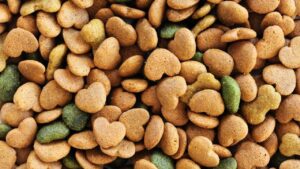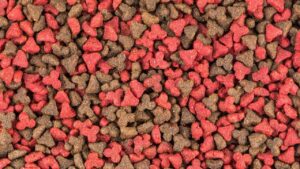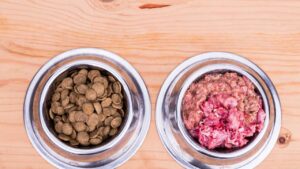Did you know that the feeding of highly processed dog foods is a major factor in the reduced life expectancy of our Dogs across all breeds in recent years?
Since the 1970s, the average lifespan of dogs has dropped from 17 to 11, that’s a reduction of 6 years in the last 40/50 years. If we carry on this way, the average Dog’s lifespan will drop to 5 by the year 2070. While nutrition isn’t the only reason for this decline, it is the one we will focus on here.
Those of us over the age of 40 (including myself) will agree how much dog “food” has changed over the last 4 decades. Even as recently as the 90s it was very popular to feed Dogs tinned meats. Around this time, a complimentary biscuit, known as a “mixer”, was introduced to bulk up the meal and “add some crunch”. Following the mixers success, the “complete and balanced” kibble was born which was “Scientifically Proven” to be superior to the tinned meat option when it came to whole heath, and more importantly, made the whole feeding process more convenient for the pet owner.

Convenience
Humans are lazy, it’s that simple. This is because most of us are trapped in the live to work lifestyle, so when it comes to feeding our pets, we want something quick and easy. While manufacturers have relied on the owner convenience as a selling point, it’s also given them the opportunity to use cheaper ingredients and increase the amount of synthetics ingredients too. This to the detriment of our pets’ overall health.

Ingredients
Carbs – These cheaper ingredients are usually things like refined grains, maize, wheat, rice, pulses, legumes, oats, potatoes etc, all of which have no place in a Dog’s diet. Dogs have ZERO requirement for carbohydrates despite the megabrands claims!
Protein – The protein element changes from formula to formula, but the majority of our Supermarket Pet foods formulas contain around 4% chicken meal, for example.
When we hear the term chicken meal, our brains automatically think of chicken breast or even a Sunday roast and that’s what the manufacturers want you to think, but in reality, chicken meal is actually bone meal, made from chicken carcasses with little meat left on them. Some manufacturers will use mechanically reclaimed chicken from meat rendering plants, the bottom of the meat bucket so to speak.
Hypoallergenic protein – Due to many dogs having allergies, especially to chicken and beef, the manufacturers will subject animal proteins to hydrogen peroxide, this is known as hydrolysis, it breaks down the proteins, so the body doesn’t recognise them and thus it won’t release antibodies which removes the immune response.
Fat s- Due to fats being volatile and quickly turning rancid, a lot of manufacturers use hydrogenated fats, similar to hypoallergenic proteins. These are treated the same way and the proteins, which stops them being easily degraded by water or oxygen. The downside to this is that the body can’t digest them easily, increasing the risk of pancreatitis and hyperlipidemia.(fats in the blood)

Digestive sugar – As most kibbles are on average 50% digestive sugar, it’s not ideal to be fed long term. Long term consumption can cause dysbiosis of the gut as they feed the bad bacteria, not to mention the health risks that run off the back of this such as diabetes, obesity, pancreatitis, cancer etc…
Ultra heat treatment – Due to the nature of how these little burnt brown balls are processed, the ingredients within are ultra-heat treated. They are subjected to temperatures between 150-200 °C which of course destroys all the cellular structure including the bioactive compounds that they contain. They become nothing more than a cheap carbohydrate filler, relying on the fortification of synthetics to hit the figures set by the pet food industry regulators.
Aesthetic appearance – Many people buy complete dry foods (kibble) because they look like they have vegetables in them, but little did you know that the orange (carrot) and green (peas) pieces were the same as the brown pieces, but they’ve just been dyed. Food dyes such as Red 40, Yellow 5,6 and Blue 2 are used but these food dyes have been linked with behavioural issues in children such as ADHD yet it is deemed acceptable to put them in our Dogs’ food. These food dyes disrupt the balance of the gut. The gut controls the central nervous system and in turn the animals behaviour.

Storage – The storage of processed dry foods has been shown to degrade vitamins and minerals over time. This is due to rancid fats adding moisture because they have been allowed to sit at ambient temperatures, providing the perfect breeding ground for microbiological growth such as mycotoxins. This has also shown to degrade amino acids, vitamins and minerals, so if you’re buying a complete and balanced kibble at a reduced price, ask yourself how long it has been in storage.
Reducing the kibbles exposure to air and heat will reduce the build up of these toxins.
Additives – Additives come in various forms but one of the most popular one is propylene glycol, commonly known as antifreeze. This is added into pet foods to keep them semi moist and stop them drying out. This will increase the palatability for the dog and it’s antifungal too.
Put simply we are what we eat!
The key to longevity for any animal is fresh wholesome food. Even adding a little fresh food to their bowl daily will go a long way to towards increasing their overall health both physical and mental!
Here at The Pet Parlour we specialise in healthy fresh food for Dogs & Cats. We are raw feeders ourselves, so if you are interested in knowing more about fresh feeding, then please make contact with us now on (01) 492 4566 or email us at info@petparlour.ie
Looking for forward to hearing from you!

